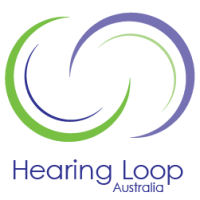When is hearing augmentation required?
Disability (Access to Premises — Buildings) Standards 2010 – D3.7 requires a hearing augmentation system to be provided where an in-built amplification system is installed in the following types of buildings / rooms:
(a) in a room in a Class 9b assembly building; or
(b) in an auditorium, conference room, meeting room, room for judicatory purposes, or a room in a Class 9b building; or
(c) at any ticket office, teller’s booth, reception area or the like, where the public is screened from the service provider.
Your building surveyor, architect or electrical engineer will be able to confirm if the building falls into this category. Typically churches, meeting rooms, classrooms, halls and auditoriums with in-built speakers, TV’s and PA Systems will require hearing augmentation.
Which solutions are compliant?
Our compliant Hearing Augmentation solutions include:
- Phonak Roger wireless system with personal induction receivers such as our Education and Hall Solutions,
- Induction Loop or,
- Cross-the-counter system for reception and ticket booths.
Phonak Roger wireless hearing augmentation systems
Phonak Roger wireless hearing augmentation systems use Roger 2.4 GHz transmission with frequency hopping technology to provide access for adults with telecoil-enabled hearing aids using a personal induction loop called a MyLink Receiver. The number of receivers required for adults is governed by the building code D3.7 (2). Australian Hearing issues children with personal Roger receivers which connect directly to the Roger wireless hearing augmentation system. Headphones are also recommended for those without telecoil enabled hearing aids to access the audio feed.
A Roger Repeater may be required to ensure coverage of the required floor area.
Induction Loop
An induction loop must be provided to not less than 80% of the floor area of the room or space served by the in-built amplification system. The ability of an induction loop to provide compliant coverage is impacted by a large number of factors including room size, shape and construction type, proximity to other electronic equipment including other induction loops and the audio input available. Please contact us and a consultant will assist you in achieving compliance of your induction loop.
Other Requirements
Braille Signs are required for compliance with Disability (Access to Premises — Buildings) Standards 2010 – D3.6.
Note compliance is subject to floor area coverage, receiver requirements and signage requirements


